DATA SOURCE(S): 2,4
Common Name(s): Douglas fir
Scientific Name: Pseudotsuga menziesii
Distribution: Western North America
Tree Size: 200-250 ft (60-75 m) tall,
5-6 ft (1.5-2 m) trunk diameter
Average Dried Weight: 32 lbs/ft3 (510 kg/m3)
Specific Gravity (Basic, 12% MC): 0.45, 0.51
Janka Hardness: 620 lbf (2,760 N)
Modulus of Rupture: 12,500 lbf/in2 (86.2 MPa)
Elastic Modulus: 1,765,000 lbf/in2 (12.17 GPa)
Crushing Strength: 6,950 lbf/in2 (47.9 MPa)
Shrinkage: Radial: 4.5%, Tangential: 7.3%,
Volumetric: 11.6%, T/R Ratio: 1.6
Color/Appearance: Can vary in color based upon age and location of tree. Usually a light brown color with a hint of red and/or yellow, with darker growth rings. In quartersawn pieces, the grain is typically straight and plain. In flatsawn pieces, (typically seen in rotary-sliced veneers), the wood can exhibit wild grain patterns.
Grain/Texture: Grain is generally straight, or slightly wavy. Medium to coarse texture, with moderate natural luster.
Rot Resistance: Douglas-Fir heartwood is rated to be moderately durable in regard to decay, but is susceptible to insect attack.
Workability: Typically machines well, but has a moderate blunting effect on cutters. Accepts stains, glues, and finishes well.
Odor: Has a distinct, resinous odor when being worked.
Allergies/Toxicity: Although severe reactions are quite uncommon, Douglas-Fir has been reported to cause skin irritation, nausea, giddiness, runny nose, along with an increased likelihood of splinters getting infected. See the articles Wood Allergies and Toxicity and Wood Dust Safety for more information.
Pricing/Availability: Should be widely available as construction lumber for a modest price. Old growth or reclaimed boards can be much more expensive.
Sustainability: This wood species is not listed in the CITES Appendices, and is reported by the IUCN as being a species of least concern.
Common Uses: Veneer, plywood, and structural/construction lumber.
Comments: Named after Scottish botanist David Douglas (though the scientific name is in honor of Archibald Menzies, who first described the tree in the 1790s). Douglas fir is technically not a true fir (Abies genus), but is in its own genus: Pseudotsuga.
The tree itself grows to be very large, and yields a large amount of usable lumber and veneer for plywood. It is an incredibly valuable commercial timber, widely used in construction and building purposes. The wood is very stiff and strong for its weight, and is also among the hardest and heaviest softwoods commercially available in North America.
The mechanical properties listed represent the average values from four regions: coastal, interior west, interior north, and interior south.
Images: Drag the slider up/down to toggle between raw and finished wood.
The first sample pictured below is flatsawn Douglas fir, the second is Rocky Mountain Douglas fir (Pseudotsuga menziesii var. glauca), and the third is a flatsawn piece with a unique wavy grain.
Identification: See the article on Softwood Anatomy for definitions of endgrain features.
Resin canals : Small to medium sized resin canals, infrequent and variable in distribution; solitary or in tangential groups of several
Tracheid diameter : medium-large
Earlywood to latewood transition : abrupt (though faster grown plantation lumber may be more gradual)
Grain contrast : high
Parenchyma : none
Lookalikes/Substitutes: The high contrast between the lighter earlywood and the darker and denser latewood can give this a bold grain patterning that isn’t seen on too many other North American softwoods. Western larch (Larix occidentalis) can have a similar amount of contrast, though larches generally lack any characteristic odor while being worked. Much more commonly Douglas fir is confused with species of southern yellow pine (Pinus spp.)—though in addition to the widely divergent East Coast/West Coast geographic sources of the two wood types, pines also have more frequent and evenly spaced resin canals.
Notes: None.
Related Content:



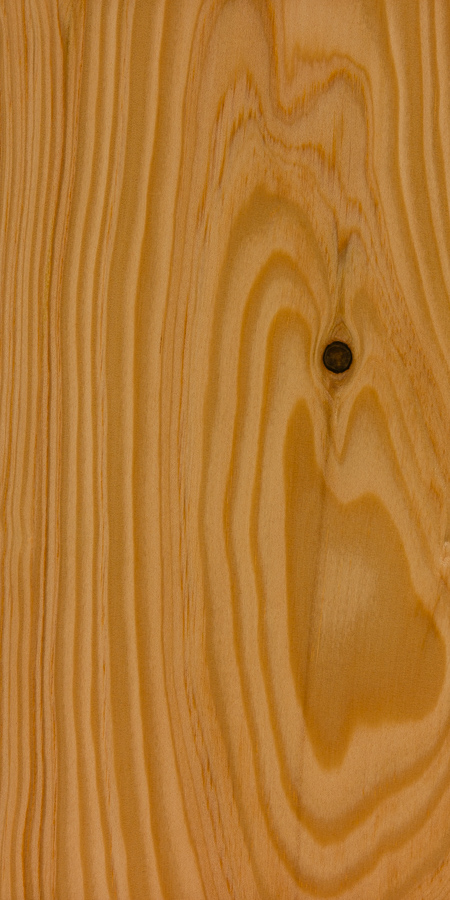
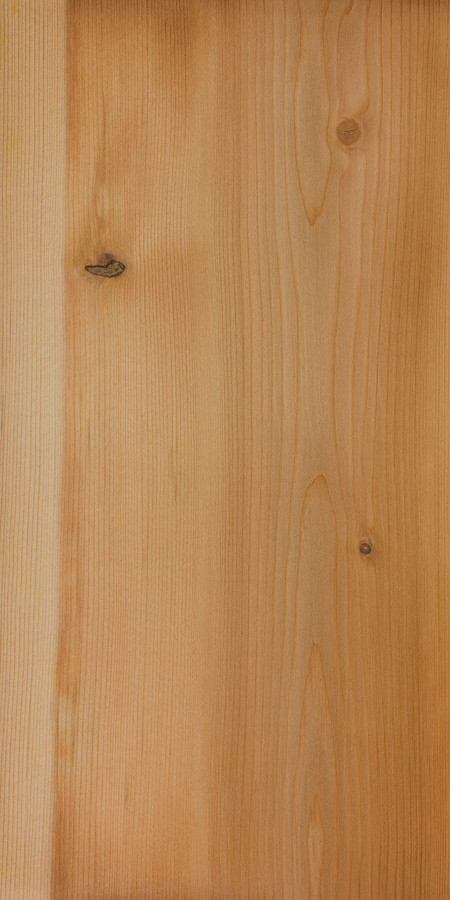
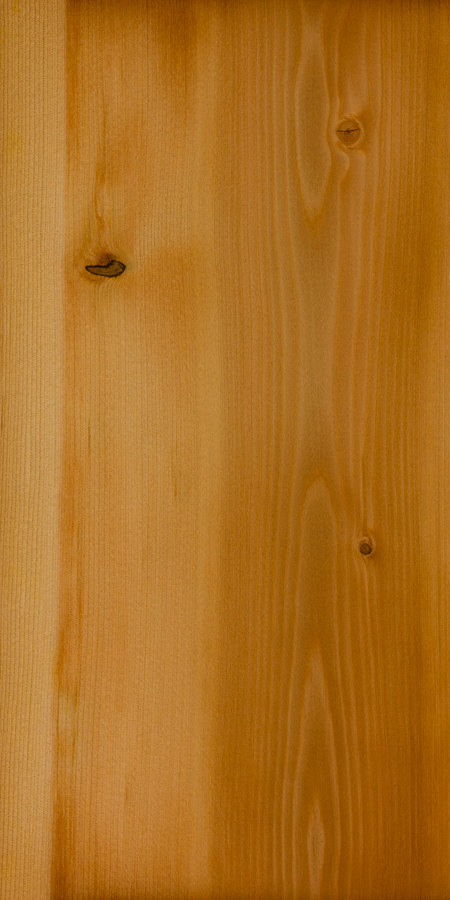


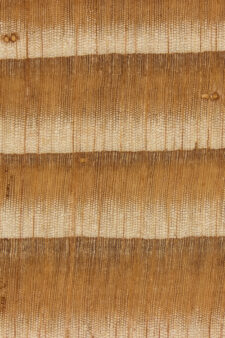

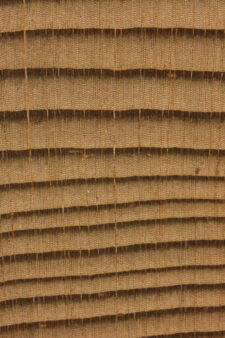


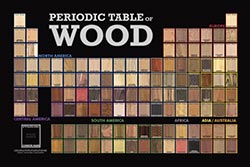
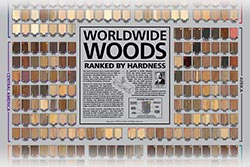





Dear all,
I am looking at the specifications of our house, built in 1962, and mention is made of “utility fir”. Is utility fir Douglas fir?
Hi, friend. Utility might be the grade of the Fir trees. Some mills take all Fir trees (including Douglas Fir and the Hem-Fir combination species) and visually grade them the same. Utility grade for light framing is found in paragraph 122d of the West Coast Lumber Inspection Bureau grading rules.
Dear Rodger,
Thank you for that.
John
Here in Canada, we name Douglas Fir > “BC fir”. But I don’t see this name in the description. Is it the same wood??
Same same.
And what is the meaning of “BC”? British Columbia or Bristle Cone?
From my understanding the natural range of Douglas fir in canada exists almost exclusively in BC. Im sure it has been planted elsewhere in the country however
Here in British Columbia (BC) Canada, we call Douglas Fir, Douglas Fir. It is primarily found in BC, but have never heard it called BC Fir. Bristle Cone is not a Fir, as far as I know, it’s a Pine and best not cut those babies down.
A Pagoda built from Douglas Fir is dripping black stains from inside the hangers. The hangers were painted inside before assembly. Any ideas on what causes the staining and what can be done to prevent it.
Hmmm? Before I looked at the photo, I thought, it’s a no-brainer, it’s sap. Sap continues to run in d. fir for years, and it will leave black stains (on fence boards, siding, etc). It’s hard to tell from your photo, but that almost looks like tar – like asphalt sealer, or acousti-seal, or black butyl. Did someone squirt something into the hanger before dropping the beam in?
Looks like a reaction to ferrous metal. Put a wet piece of steel wool on a piece of fir and it will start turning the wood black in a day. I feel like there were metal shavings or filings on the bottom of the hangars when the wood was installed. Reaming out the holes if alignment was out could account for that.
I bought a heavy duty bunk bad which is supposed to be douglas fir. I noticed some of the larger pieces have the reddish look like those here, but some of the smaller(the slats) are more white in color, maybe like pine. How can I tell if the bed is all douglas fir…can douglas fir look whitish like pine? I honestly in retrospect don’t trust the company I bought from have had a hard time even getting the order…:>)
It’s possible that the sapwood of douglas fir would be lighter in color. But if 100% of all the slats are all the same color, and none have a hint of the reddish color, that might be an indicator that it is a different species.
Douglas Fir sapwood is whitish like pine. I wouldn’t be surprised that most of the 3/4″ x 3 1/2″ boards are mostly sapwood. Consider how a round log is converted into rectangular lumber. This is over simplified, but draw a circle and then draw the largest square inside it. You will have four arc/cord pieces and and one square. The four arc/cord pieces are mostly if not all sapwood. These pieces get resawn into thinner lumber.
I’ve worked with more d. fir than I could count. I’ve never seen a piece of d. fir that didn’t look like a piece of d. fir – particularly white, like pine. D. fir is orange (or salmon, and red, purple, etc) As it ages, those colors darken, and more obviously fir. I would definitely say your white bed slats are not fir.
Is Douglas fir same as Tsuga?
Yeah I think so. Stuga is the Japanese word for Douglas fir.
No, Douglas can be mistaken for Tsuga, hence the Pseudo in the latin name. Tsuga is a different type of tree (and the name comes from Japanese).
It wouldn’t surprise me if the slats are made of pine. It doesn’t make that much difference actually, a lot of bed slats are made of pine. I would consider a bed made with douglas fir supports and pine slats to be excellent, even preferable construction. More likely your sloppy company just wrote the description wrong. The bed sounds fine.
Does anyone know what is happening if my unfinished Fir wood gets speckles on it over time? I’m an artist and have used fir as a material for pyrography / woodburning images onto. One of my friends that owns a piece of mine showed me a picture of it with all these little speckles and are wondering if it’s mold. The piece didn’t have these speckles 4 years ago when I first made it. What’s the best way to treat this? I feel awful and am wondering if I need to switch to a new material and make a new… Read more »
It could be pitch. I’ve really only seen it happen in pine, so I’m not sure if that’s what it is. I suppose it could be some sort of mold or fungus growth, hard to say for sure without seeing it.
Could be mildew. You could try cleaning it with a commercial deck cleaning product, which use acidity or oxidation to kill the spores. I think this can be avoided by making sure your piece is fully seasoned before working it (you’ll sand or plane off the outer layer with the mildew growth to get a fresh surface). Kiln dried wood should not have this problem but it depends on how thorough they are.
Fly specks.
It’s sap. When trying to identify a fir tree, or a piece of fir lumber, sap is the biggest giveaway. I’ve worked with d. fir that has been cut down years ago, and is bleached white, or almost rotted to dirt, and it still has sap running. What you’re seeing is tiny little dots of sap coming through either the tiny pores left from planing or sanding. or tiny pores in whatever finish you put on it. The tiny drops of sap come to the surface, then crystalize like sugar when they oxidize, leaving little, white, specks on the surface.… Read more »
So many of these issues are affected by the sapwood:heartwood ratio in the fir piece used. Fir sapwood predominates through tree age 20 after which the proportion of heartwood increases. Heartwood is stronger and harder by more than 25%. When dried a piece 1″x2″x12″ placed vertically can support a weight of one ton! You should select the reddish heartwood fir studs when building a weight-bearing wall.
I’m jealous of these westerners and their perfect softwood…
14″x5 1/2″ Snare drum I made from Douglas Fir.
Such a gorgeous scandinavian style floor & our most popular floor… dubbed the world’s most beautiful floor…but the most problematic that we produce. Many people are unaware that Douglas Fir is a Softwood and will mark / dent easily..it also has a tendency to split and crack.
In my experience, density matters. If your growth rings are 1/4 inch each, its soft. We mill trees with 10 years to 1 inch of growth and they are hard and strong.
Good Morning ,does anyone know how much weight can be put on a 1 and a half inch by 2 inch Pc. of doug fir 2 inch tall that is hanging over a metal frame 9 inches,I am wanting to do this for floor framing for my rv trailer 16 inch on center
Than ks a very good information . it is very use ful in engeneering and construction parts
thx a lot
pradeep
Thanks for the information. I have read here https://www.urbandexterous.com/characteristics-of-douglas-fir-wood/ that it offers good struggle to splitting which makes it a good lateral holder of drilled objects. Is it true?
I found that after burning this wood we, meaning my two Standard Poodles and me, couldn’t breath very well. I didn’t connect it soon enough to stop the effects of the difficulty to breathing and the couphing, until after a couple of days. I had to take my oldest, Cash, to the Vet and he had to go on medication. Cottonwood almost killed me a few years earlier when I burned it on a reguler basis. I now have found a couple of woods that my dogs and I can not use on a regular basis. I have found that… Read more »
did you make sure it was very dry and well seasoned???? burning anything green or half green is bad for anyone and bad for the chimney (creosote).
do you burn it outdoors for a camp fire? If in a wood stove, consider checking your stove and pipes for leaks.